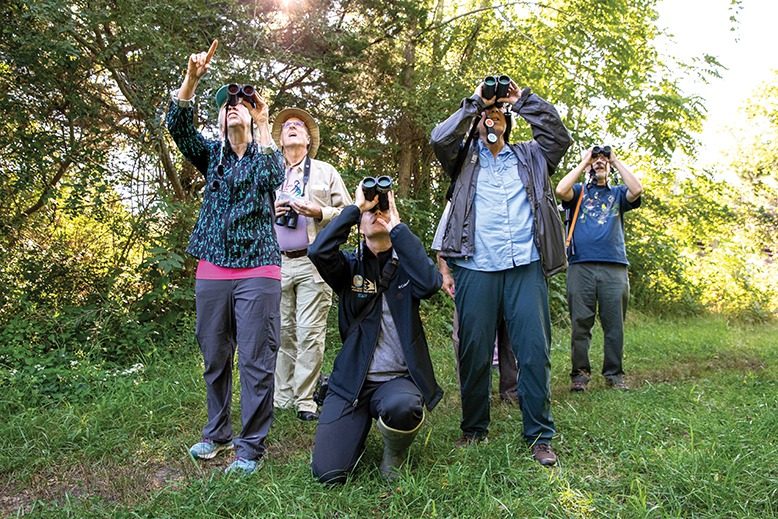
Few places in the country—some say, even the world—offer a better perch for viewing migrating birds’ fly-in than Cape May in fall. It’s an airshow you don’t want to miss.
Like many wingless folks, avians make their way to the southern tip of the state to rest and refuel. From late August to early November, more than a million birds touch down in a few square miles of beaches, forests and marshlands at the south end of the state.
Eastern birds follow a well-winged migratory route down the Atlantic coast when they travel south for the winter. Their flight path steers them straight down the cape to its southernmost tip, aptly named Cape May Point. Short of bad weather, most drop by for only a day before resuming their trip.
The majority of these day-trippers have long hauls ahead of them. Many species summer in Canada, where they breed, and winter in South America, where food is easier to find in warm weather. One shorebird, the red knot, racks up 9,000 miles on its commute between the Arctic tundra and South America.
Throughout the year, New Jersey Audubon offers highly popular weekly tours at three of Cape May’s top bird-watching spots: Higbee Beach, the Cape May Bird Observatory and Cape May Point State Park. It also offers birding tours in Cape May’s back bay. All are led by knowledgeable naturalists.
Novice birders may want to attend the nonprofit’s annual Cape May Birding Festival held in mid-October at Convention Hall, featuring noted speakers, special events and field trips.
